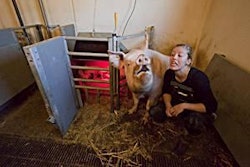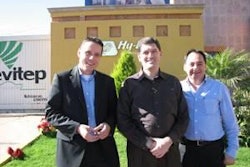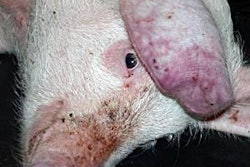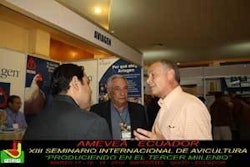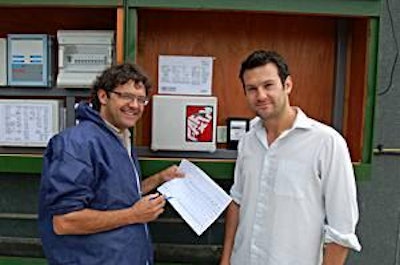
Pig farmers could be using between five and ten times more power than they really need or should be, mainly because they cannot see it and do not bother to check how much they are using - especially if everything seems to be running smoothly.
However, an increasing number of production experts are warning pig farmers that they could be missing production targets, as well as wasting money, by keeping farrowing units and nurseries too warm and by keeping the lights on for too long. They warn that simply switching off half the fans in the building to save electricity won’t help, because the other fans will just stay on for longer and use more energy.
A close look
Nick Bird, director of the British farm energy and control specialists Farmex, suggests that pig producers should spend more time thinking about why they are using energy and then strive to use it more efficiently to help increase production, as well as to cut fuel bills.
“A big part of monitoring is looking to see how one is using energy and then sitting down and working out how you can use it better. For example, many farmers don’t seem to realise that pigs produce their own heat and are also able to regulate their own body temperature,” he says.
“We have found that a number of farrowing rooms are far too warm and the sows are burning up and very uncomfortable – and this is reflected on both the bank balance and production. Obviously, you have to get the area up to a certain heat initially, but once the temperature is right, the controls should be turned down to allow for the heat generated by the pigs themselves,” advises Mr Bird.
“It’s far better for the piglets, and the budget, if you use as much of their own heat to keep them as warm as possible, rather than to keep on turning the heat up. But you will only know this if you have robust temperature controls and you keep an eye on them all the time.”
He cites the experience of a Suffolk farming company that claims to be saving nearly £3,000 a year thought the accurate control of electricity use in the heated creep areas of its farrowing houses and the installation of plastic curtains to retain the heat. An additional bonus is that the piglets are around 500g heavier when weaned at four weeks.
Five farrowing houses at Bacton Pigs Ltd have a total of 60 pens with boxed and curtained side creeps heated by 175W infra-red lamps. These are controlled by Farmex’s Dicam system, which allows the piglets to be started off at 30 deg C, followed by a pre-planned temperature reduction curve an a daily basis. Electric meters were fitted to two of the houses and read via the Dicam controllers and the Barn report computerised monitoring system.
“Since the curtains have been fitted allowing us to control the temperature inside the creep we have seen a reduction in cost of about £1 per crate per week, equivalent to £3,120 a year, explains the company’s pig operations manager Simon Guise.
“Without the creep leaking heat, the farrowing room temperature is also more controlled and the sow feed intake is higher. This has led to better milking and a heavier pig at weaning,” he adds.
Mr Bird believes farmers should be spending much more time ensuring that their ventilation systems are working properly because, he argues, most of the heat in a building is actually lost through ventilation, rather than because of a lack of insulation, especially if the air is being changed up to eight times a day.
Another area where Mr Bird has strong views concerns lighting in the growing and finishing room.
He maintains that if one keeps the lights on all the time, the pigs lose control of their body clocks, with a subsequent negative effect on production and an increase in tail biting and other behavioural problems as they experience a piggy form of jetlag.
“Think about it; it makes sense to switch the lights off occasionally, or use a dimmer switch to improve life for the pigs and to help you boost production, as well as saving on energy costs.”
Thinking process
Mr Bird is convinced that pig producers all over the world really should spend more time sitting down and thinking about where and why they use energy – and how they can recycle and reuse a lot of the relatively cheap heat that is generated by their animals!
And his views seem to have struck home with at least one pig building company that is now fitting data loggers as standard to all its new pig buildings.
In addition to ensuring the latest accommodation manufactured by the UK-based ARM Buildings made in the UK and sold across Europe are “fine-tuned” at the commissioning stage and pig producers using them are also be able to monitor to see if the buildings are maintaining the correct environment in terms of ventilation rate, temperature, heater use and so forth.
This allows them to ensure that their pigs are always performing at optimum levels – and that they are always using their energy cost-efficiently.


